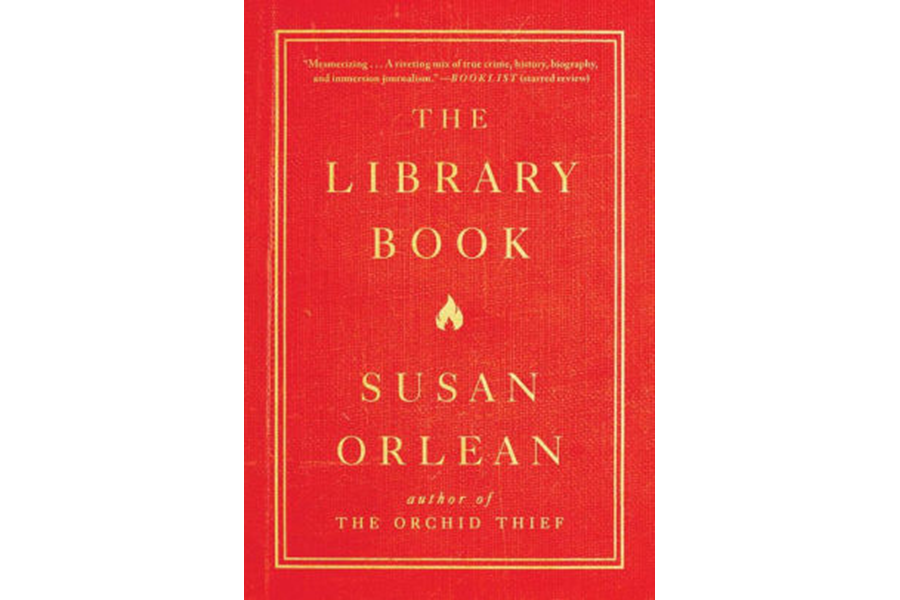'The Library Book' is a delightful love letter to public libraries
Loading...
Where in the stacks would you find Susan Orlean’s The Library Book? Under the Dewey Decimal System, do we file it under 364.1523 (true crime), 028.9 (reading), 973 (U.S. history)?
Regardless, from the very first line, it’s hard to imagine re-shelving it unread.
“Even in Los Angeles, where there is no shortage of remarkable hairdos, Harry Peak attracted attention,” Orlean begins.
Peak, we soon learn, was the suspect in the biggest library fire in the history of the United States, a 1986 blaze at Los Angeles Central Library that destroyed almost half a million books. Information about the man and the crime keep looping throughout Orlean’s story, but the heart of the book ultimately isn’t crime or history or mystery. It’s a loving biography of the library itself – and, by extension, libraries everywhere.
Orlean, the New Yorker journalist whose past books include “The Orchid Thief” and “Rin Tin Tin,” continues her usual practice here of captivating readers by investigating her own obsessions. Bibliophiles will feel deeply understood from the start, when Orlean talks about bringing her young son to a branch library in Los Angeles, just as her own mother had taken her to one in the Cleveland suburbs. “It wasn’t that time stopped in the library. It was as if it were captured here, collected here, and in all libraries – and not only my time, my life, but all human time as well.”
As Orlean delves into Central Library’s history, she re-animates the lively characters who once dominated the scene, such as Mary Jones, the lauded city librarian who refused to resign in 1905 to make way for Charles Lummis, celebrity journalist and outdoorsman. (The board fired Jones.) We’re introduced to reading evangelist Althea Warren, who told a library association in 1935 that librarians should “read as a drunkard drinks or as a bird sings or a cat sleeps or a dog responds to an invitation to go walking, not from conscience or training, but because they’d rather do it than anything else in the world.”
Unexpectedly engaging sections are tied to architects and landscaping and budgets, plus the overwhelming modern challenges of homelessness and mental illness. (“Every problem that society has, the library has too, because the boundary between society and the library is porous…,” Orlean wrote.) We learn how “teen departments” evolved and about the delicate politics of loaning out music scores, and hear some of the odd questions asked of the reference desk pre-Google; “they read like synopses of a play; each one seems like a snapshot of life that concluded with someone saying “Let’s just call the library!”
In other hands the book would have been a notebook dump, packed with random facts that weren’t germane but felt too hard-won or remarkable to omit. Orlean’s lapidary skills include both unearthing the data and carving a storyline out of the sprawl, piling up such copious and relevant details that I wondered how many mountains of research she discarded for each page of jewels.
Investigating the momentous fire involved tracking down Peak’s family as well as other people and paperwork connected to the crime. The fire is still recent enough for her to find living witnesses, but distant enough to apply new scientific findings and a fresh perspective.
Peak is not the story’s villain; that role goes to the fire itself, whose strange physics, Orlean wrote, created a situation almost never seen outside a laboratory.
“Usually, a fire is red and orange and yellow and black. The fire in the library was colorless. You could look right through it, as if it were a sheet of glass. Where the flame had any color, it was pale blue. It was so hot that it appeared icy.”
Even the sloggy aftermath lends itself to bated-breath storytelling, such as salvaging whatever books could be repaired, even though some were literally “equal amounts water and paper.” McDonnell Douglas used a space simulation chamber to test-dry the first batch of 20,000 volumes.
If the fire is the villain, the library is unquestionably the hero. And in telling the story of this one library, Orlean reminds readers of the spirit of them all, their mission to welcome and equalize and inform, the wonderful depths and potential that they – and maybe all of us, as well – contain.
Ultimately, Orlean tells us, she wanted to write the book “to tell about a place I love that doesn’t belong to me but feels like it is mine, and how that feels like a marvelous and exceptional thing. All the things that are wrong in the world seem conquered by a library’s simple unspoken promise: Here is my story, please listen; here I am, please tell me your story.”






